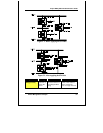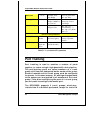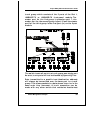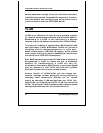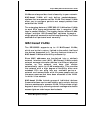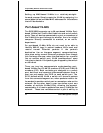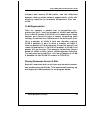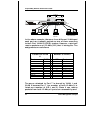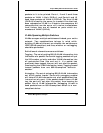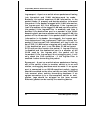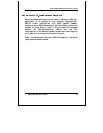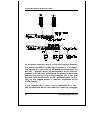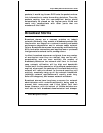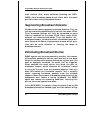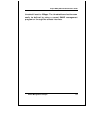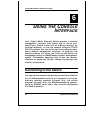
24-port NWay Ethernet Switch User’s Guide
Switch Management Concepts
45
packets to it to be printed. Ports 1, 2 and 3 send these
packets on VLAN 1 (their PVID=1), and Ports 11 and 12
send these packets on VLAN 2 (PVID=2). The third VLAN
(PVID=3) is used by the server to transmit files that had
been requested on VLAN 1 or 2 back to the computers. All
computers that use the server will receive transmissions
from it since they are all located on ports which are
members of VLAN 3 (VID=3).
VLANs Spanning Multiple Switches
VLANs can span multiple switches and indeed, your entire
network. Two considerations to keep in mind while
building VLANs of this sort are whether the switches are
IEEE 802.1Q-compliant, and thus, whether or not tagging
should be performed.
Definitions of relevant terms are as follows:
Tagging - The act of putting 802.1Q VLAN information into
the header of a packet. Ports with tagging enabled will put
the VID number, priority and other VLAN information into
all packets that flow into and out it. If a packet has
previously been tagged, the port will not alter the packet,
thus keeping the VLAN information intact. Tagging is used
to send packets from one 802.1Q-compliant device to
another.
Untagging - The act of stripping 802.1Q VLAN information
out of the packet header. Ports with untagging enabled
will take all VLAN information out of all packets that flow
into and out of a port. If the packet doesn’t have a VLAN
tag, the port will not alter the packet, thus keeping the
packet free of VLAN information. Untagging is used to
send packets from an 802.1Q-compliant switch to a non-
compliant device.



